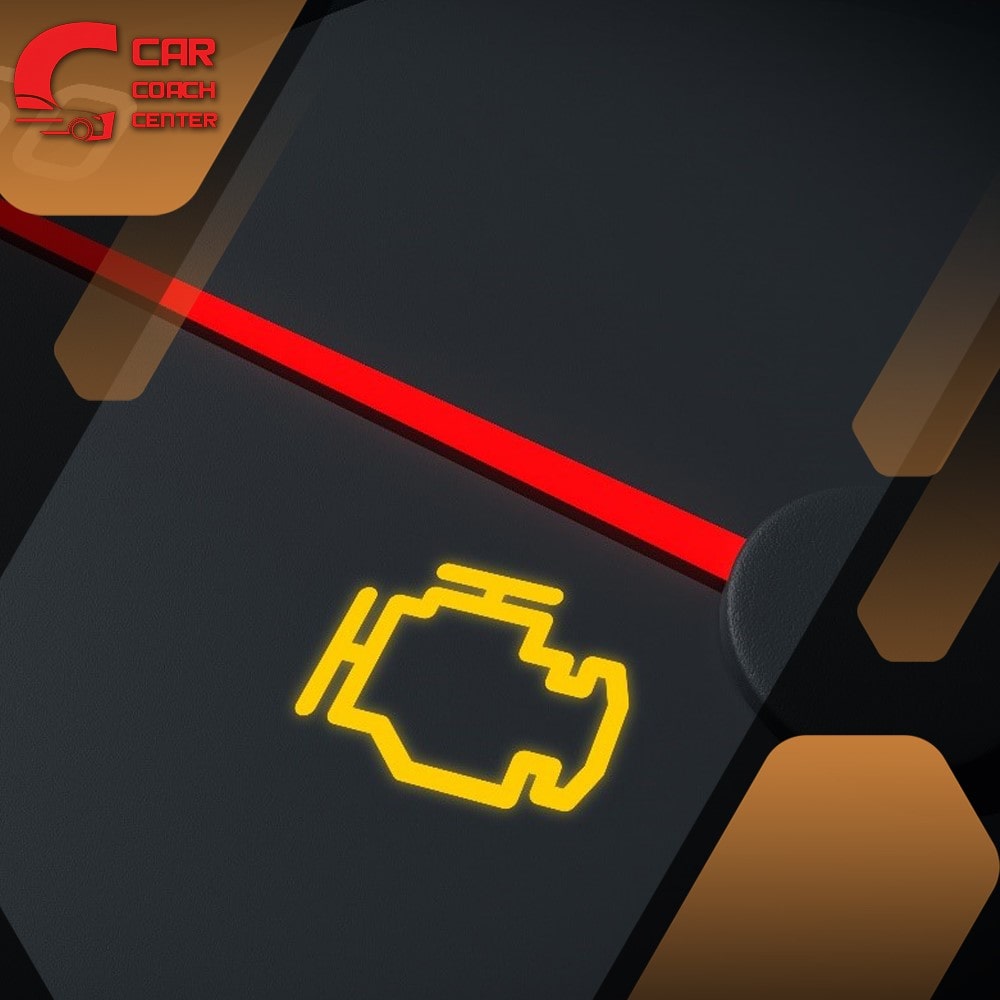Introduction to Kia Check Engine Light Symbols
Welcome to the Car Coach Center, where we delve into the world of Kia check engine light symbols. In this comprehensive guide, we will explore the various symbols that may appear on your Kia’s dashboard, decipher their meanings, and provide you with valuable insights into their implications.
Our aim is to equip you with the knowledge necessary to understand and troubleshoot common car problems related to the check engine light. So, let’s dive in and unravel the mysteries behind Kia’s check engine light symbols.
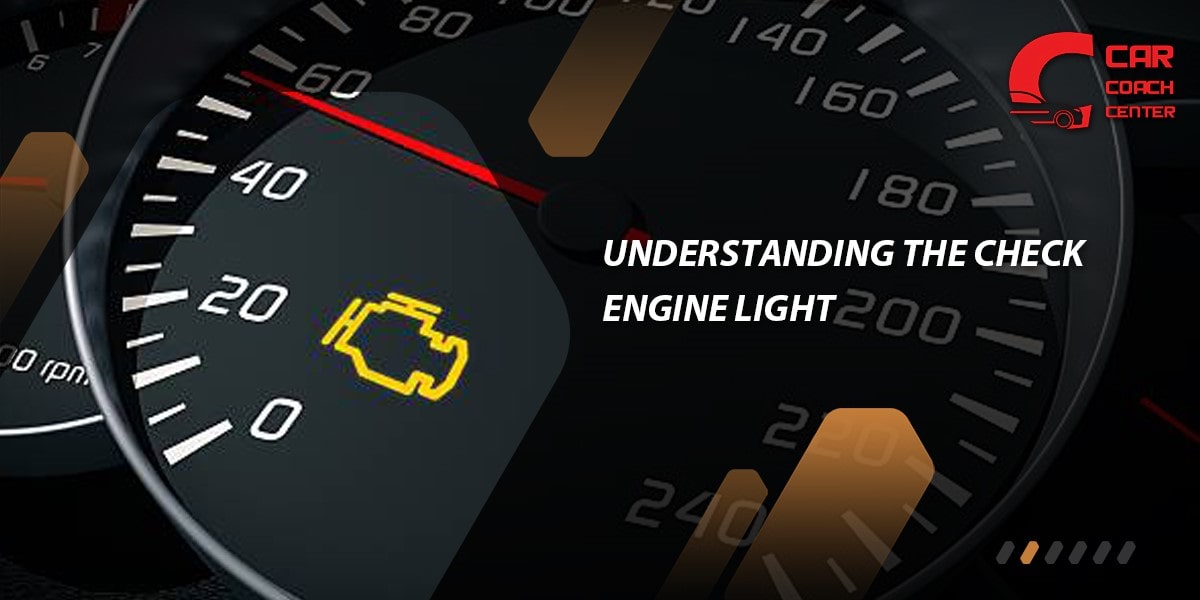
Understanding the Check Engine Light
What is the check engine light?
The check engine light, also known as the malfunction indicator lamp (MIL), is a crucial component of your Kia’s dashboard. It illuminates when there is a potential issue with the vehicle’s systems, indicating the need for attention and potential diagnostic trouble codes (DTCs) to be retrieved.
Importance of addressing check engine light issues promptly
Neglecting check engine light warnings can lead to more severe problems and costly repairs down the road. It is crucial to address these issues promptly to prevent further damage and potential safety hazards.
Introducing Kia check engine light symbols
Kia vehicles have specific symbols that appear when the check engine light is activated. These symbols vary based on the model and year of your Kia vehicle. In the following sections, we will decode and explore the meanings behind these symbols.
Decoding Kia Check Engine Light Symbols
Overview of common Kia check engine light symbols
Kia vehicles feature a range of symbols that may illuminate when the check engine light is activated. These symbols serve as indicators of specific issues within the vehicle’s systems. Let’s explore some of the most common symbols and their meanings:
Symbol 1: Engine Malfunction
This symbol typically represents a general engine malfunction. It indicates that there is a problem with one or more components of the engine, and further diagnosis is necessary to determine the exact issue.
Symbol 2: Oxygen Sensor Malfunction
When this symbol appears, it suggests a malfunction with the oxygen sensor. The oxygen sensor plays a crucial role in measuring the oxygen levels in the exhaust gases, and a malfunctioning sensor can affect engine performance and emissions.
Symbol 3: Catalytic Converter Issue
If you see this symbol, it indicates a potential problem with the catalytic converter. The catalytic converter is responsible for reducing harmful emissions, and a faulty converter can lead to decreased engine performance and increased emissions.
Symbol 4: Loose Gas Cap
This symbol signifies a loose or improperly sealed gas cap. While it may seem like a minor issue, a loose gas cap can cause fuel vapor leaks and trigger the check engine light. Ensuring a proper seal will often resolve this problem.
Symbol 5: Mass Airflow Sensor Problem
When the mass airflow sensor symbol illuminates, it points to a malfunction in the mass airflow sensor. This sensor measures the amount of air entering the engine, and a faulty sensor can cause issues with fuel efficiency and engine performance.
Symbol 6: Ignition System Issue
If you encounter this symbol, it suggests a problem with the ignition system. Issues with ignition coils, spark plugs, or ignition timing can lead to misfires, reduced power, and increased fuel consumption.
Symbol 7: Emissions Control System Fault
This symbol indicates a fault within the emissions control system. The emissions control system is responsible for managing and reducing harmful exhaust emissions. A malfunction can lead to increased emissions and decreased engine efficiency.
Symbol 8: Transmission Problem
When this symbol appears, it suggests an issue with the transmission. Problems with the transmission can result in gear shifting difficulties, slipping gears, or abnormal noises. Prompt attention is necessary to avoid further damage.
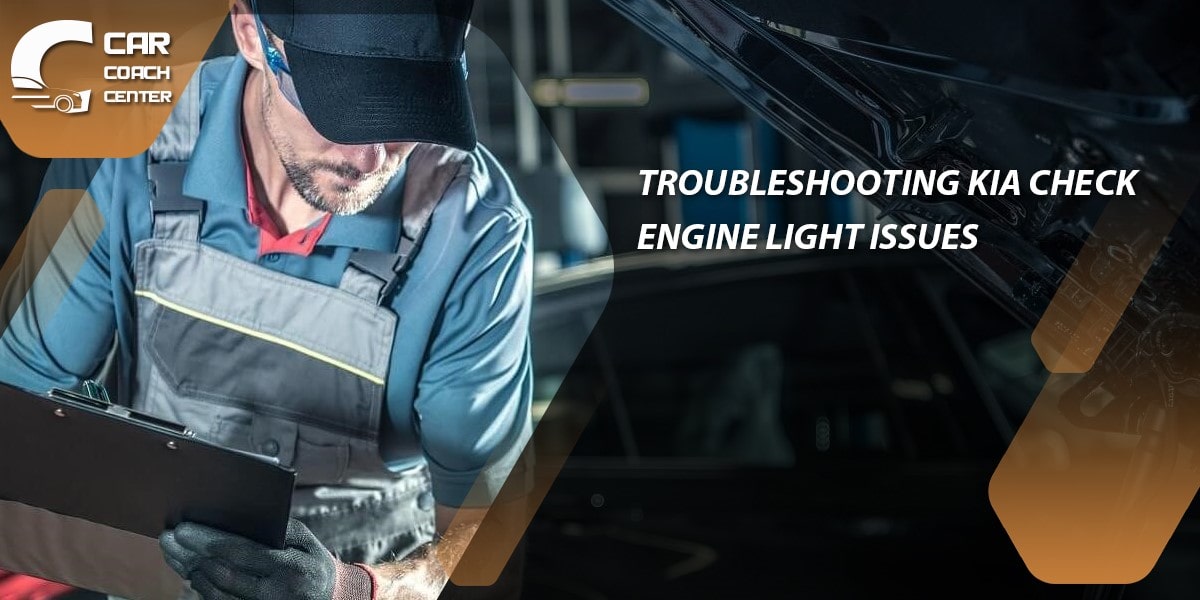
Troubleshooting Kia Check Engine Light Issues
When the check engine light illuminates in your Kia, it’s important to take appropriate steps to troubleshoot and address the underlying issues. Here is a step-by-step guide to help you navigate through the troubleshooting process:
Step 1: Check for a loose gas cap
A loose or improperly sealed gas cap is one of the most common causes of the check engine light activation. Start by ensuring that the gas cap is tightly secured. If it is loose, tighten it properly and observe if the light goes off after a few driving cycles.
Step 2: Assess the severity of the issue
Pay attention to the vehicle’s performance and any unusual sounds or sensations while driving. If the check engine light is flashing or if you experience significant engine misfires, it indicates a severe problem that requires immediate attention. In such cases, it is recommended to stop driving and seek professional assistance.
Step 3: Perform a visual inspection
Inspect the engine bay and surrounding areas for any visible signs of damage, loose wires, or fluid leaks. Check the condition of the battery terminals, spark plug wires, and vacuum hoses. While visual inspections may not always identify the specific issue, they can provide valuable clues.
Step 4: Utilize an OBD-II scanner
To retrieve diagnostic trouble codes (DTCs) associated with the check engine light, you’ll need an OBD-II scanner. Plug the scanner into the vehicle’s OBD-II port (usually located under the dashboard) and follow the instructions to retrieve the codes. These codes will provide insights into the specific systems or components experiencing issues.
Step 5: Seek professional assistance
Once you have retrieved the DTCs, it’s recommended to consult a qualified technician or visit a Kia service center. They have the expertise and specialized diagnostic tools to interpret the codes accurately and perform in-depth inspections. Professional assistance ensures precise identification of the problem and appropriate resolution.
Step 6: Addressing specific check engine light codes
Based on the DTCs retrieved, the technician will diagnose the root cause of the check engine light activation. They will perform further tests, inspections, and potentially use advanced diagnostic equipment to pinpoint the specific issue. Once identified, they will provide you with a detailed explanation and recommend the necessary repairs or maintenance procedures.
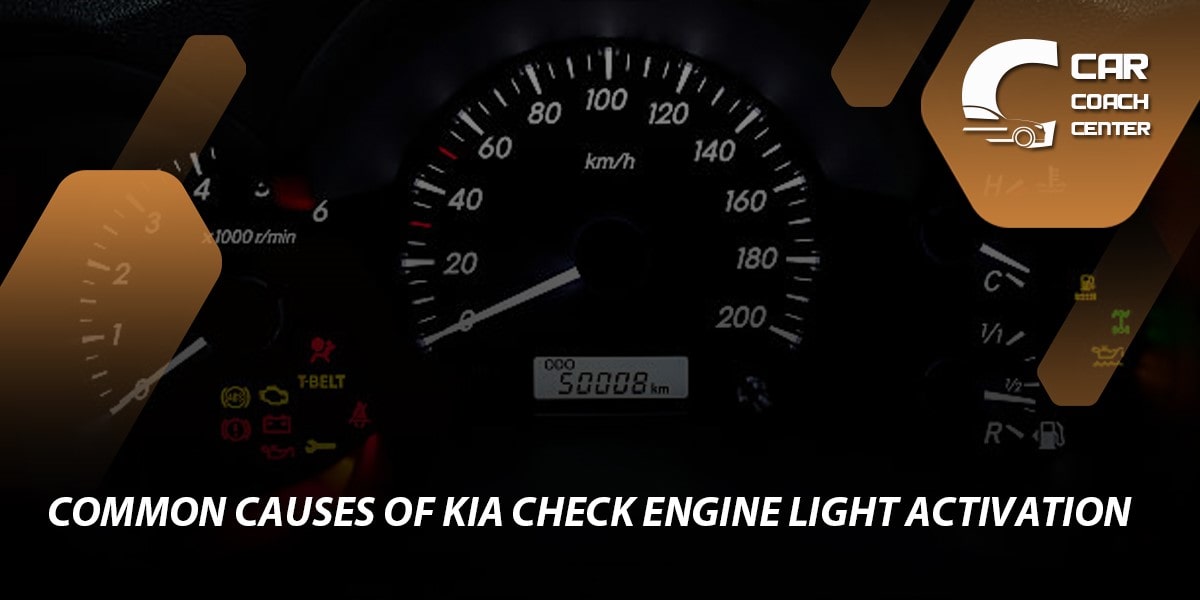
Common Causes of Kia Check Engine Light Activation
The check engine light in your Kia can be triggered by various underlying issues. Understanding these common causes can help you identify potential problems and take appropriate actions. Here are some of the frequent culprits behind check engine light activation:
-
Faulty oxygen sensor
Oxygen sensors monitor the oxygen levels in the exhaust gases and provide feedback to the engine control unit. A malfunctioning oxygen sensor can lead to decreased fuel efficiency, increased emissions, and potential damage to the catalytic converter.
-
Malfunctioning catalytic converter
The catalytic converter plays a crucial role in reducing harmful emissions. Over time, it can become clogged or fail due to various factors such as engine misfires, oil or coolant contamination, or age-related deterioration. A faulty catalytic converter can trigger the check engine light.
-
Issues with the mass airflow sensor
The mass airflow sensor measures the amount of air entering the engine, allowing the engine control unit to determine the appropriate fuel-to-air ratio. A malfunctioning mass airflow sensor can result in poor engine performance, reduced fuel efficiency, and rough idling.
-
Ignition system problems
The ignition system, including spark plugs, ignition coils, and the ignition module, is responsible for igniting the air-fuel mixture in the combustion chamber. Faulty spark plugs or ignition coils can cause misfires, leading to a check engine light activation.
-
Evaporative emission control system faults
The evaporative emission control system prevents the release of fuel vapors into the atmosphere. Issues with components such as the gas cap, charcoal canister, or purge valve can trigger the check engine light.
-
Transmission-related issues
Problems with the transmission, such as slipping gears, shifting difficulties, or abnormal noises, can activate the check engine light. Faulty sensors, solenoids, or internal mechanical issues within the transmission can be the underlying cause.
Prevention and Maintenance Tips
Taking proactive measures to maintain your Kia can help prevent check engine light issues and ensure optimal performance. Here are some prevention and maintenance tips to keep your vehicle in top shape:
Regular vehicle maintenance
Adhere to your Kia’s recommended maintenance schedule, including oil changes, filter replacements, and scheduled inspections. Regular maintenance helps identify and address potential issues before they escalate and trigger the check engine light.
Importance of oil changes
Regular oil changes are vital for engine health. Follow the manufacturer’s guidelines for oil change intervals and use the recommended oil type. Neglecting oil changes can lead to engine sludge buildup, increased friction, and potential engine damage.
Addressing minor issues promptly
Don’t ignore minor issues such as unusual noises, vibrations, or fluid leaks. Even seemingly insignificant problems can indicate underlying issues that may worsen over time. Prompt attention and necessary repairs can prevent check engine light activation.
Keeping the electrical system in check
Ensure the battery terminals are clean and securely connected. Faulty electrical connections can cause intermittent issues and trigger the check engine light. Regularly inspect and replace worn-out spark plug wires and ignition system components.
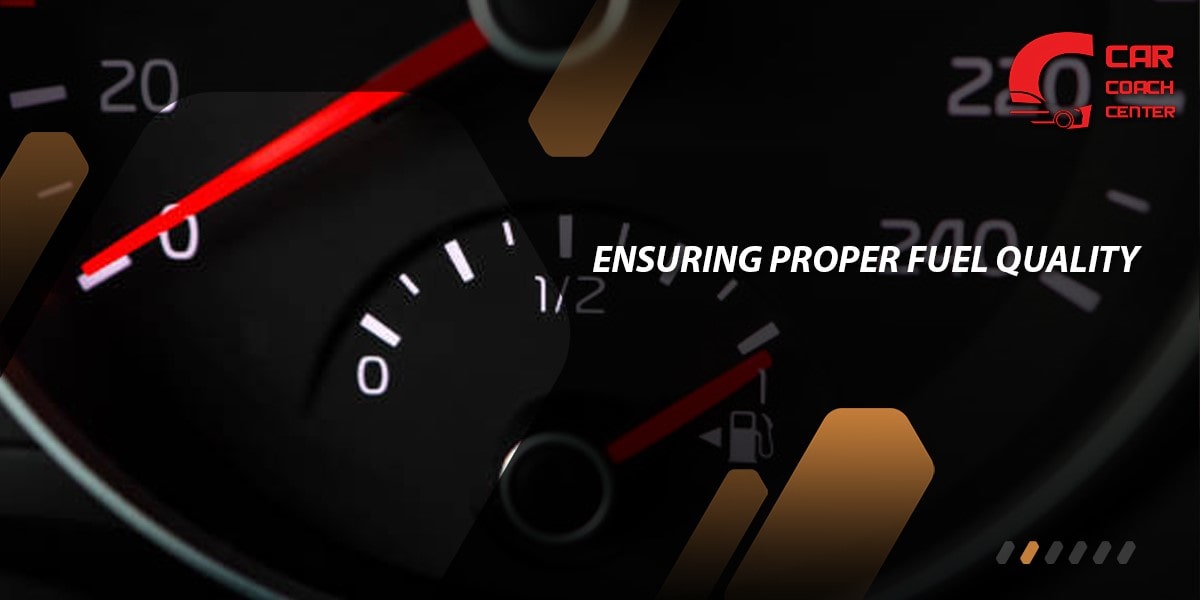
Ensuring proper fuel quality
Use high-quality fuel and avoid prolonged use of low-quality or contaminated fuel. Poor fuel quality can adversely affect engine performance, fuel efficiency, and emissions, potentially leading to check engine light activation.
Conclusion
In conclusion, understanding Kia check engine light symbols is essential for maintaining the performance and longevity of your vehicle. By decoding these symbols and taking appropriate actions, you can address underlying issues promptly and prevent costly repairs.
Remember, carcoachcenter.com is here to support you with expert advice and guidance on resolving check engine light problems. Stay proactive, stay informed, and enjoy a smooth and worry-free driving experience in your Kia vehicle.
FAQ
Why is it important to understand Kia check engine light symbols?
Understanding these symbols helps address issues promptly, ensuring vehicle safety and preventing costly repairs.
Can I troubleshoot check engine light symbols on my own?
DIY troubleshooting is possible, but professional assistance may be necessary for accurate diagnosis and resolution.
How can regular maintenance help prevent check engine light activations?
Regular maintenance ensures early issue detection, reducing the likelihood of check engine light symbols appearing in your Kia vehicle.

